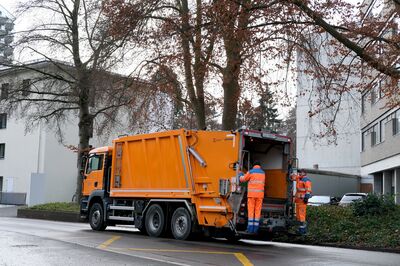ISWA World Congress Singapore : That was day two of the ISWA World Congress

Day two of this years ISWA World Congress in Singapore again offered a wide array of presentations, panel discussions and key note speeches on various aspects of the waste management.
The day started with a panel discussion on the necessity of Environmental, Social and Governance practices (ESG) and how different countries can implement them. ISWA president Carlos Silva Filho discussed the topic with Dr Amy Khor, WMRAS Advisor & Senior Minister of State, Ministry for Sustainability and the Environment, Singapore, Dr Noni Purnomo, President Commissioner, PT Blue Bird Tbk, Indonesia and Steve Peters, Senior Energy Specialist, Asian Development Bank.
The funding of adequate waste management systems in lower-income countries was topic of another panel discussion.
Managing health care waste
One of the concurring sessions evolved around health care and hazardous waste. Dr Anne Woolridge,
Chief Operating Officer at Independent Safety Services, United Kingdom, focused on how health care waste has become of interest to the public because of the pandemic and how quite a lot of the PPE has been overclassified. Also a lot of generated waste could have been avoided quoting the use of gloves for vaccinations. Those are not strictly necessary, she said, but the public is used to it and demands it. The media fueling this impression by condemning health care personnel not using gloves. “We don’t only need to re-educate the public, we also need to re-educate the media,” she said. There should be more focus on the actual hazardous healthcare waste that needs special treatment.
Paeng Lopez, Plastics in Healthcare Program Manager for Southeast Asia and project officer at Philipine organization Health Care without Harm presented a study conducted to five hospitals to get better data on effects of the pandemic on waste generation and management in healthcare.
The survey found out that
- 57% of the total plastic wastes are non-essential i.e. food preparation, food storage, utensils
- 25% of total plastic waste are infectious
- 18% are PPE
Furthermore, some medical wards have a very high percentage of unsegregated infectious waste. Health care facilities should improve the segregation especially in non-Covid areas in order to reduce the amount of waste requiring expensive treatment. Hospitals generate tonnes of food waste annually, which can attract disease vectors and generate methane. Therefore, they should bio digest or compost the food waste in order to retain some value and reduce the carbon footprint.
Hazardous waste
Asbestos still is a huge problem. Piet Coopman, Coordinator at Belgian company Interafval and Christof Delatter, Head of Strategy and Policy, and Interim Administrator General at OVAM presented the door-to-door collection of asbestos cement waste in Flanders.
That there can be a value to hazardous waste was shown by Dr Shanmuga Kittappa, Manager, Research and Development of the Environmental Preservation and Innovation Centre in Malaysia. The facility focuses on a cradle-to-cradle approach for hazardous waste by turning it back into useful material streams such as building materials or pyrolysis oil.
Alan Encinas, technical programme director at ISWA, talked about good practices for the separate collection of hazardous household waste. Even though this these waste represent only a minor fraction of the household waste they may have a major impact on health and the environment. “The public needs to be aware of the hazard certain materials and substances pose”, he said. “Also education and training in this regard are necessary.” Easy access to disposal points or even door-to-door collection are ways to reduce the risk those wastes pose.
Work place safety
During the pandemic workplace safety has become a buzzword. But when talking about it in the context of waste collection, we are not only considering face masks and disinfecting surfaces on a regular basis. As David Biderman, Executive Director of the Solid Waste Association of North America (SWANA) put it: “Collecting waste is a dangerous.” SWANA therefore has come up with a special safety programme that includes regular trainings and informative newsletters.
“We have good data for the US and that shows that one person who works in the industry is killed every week. And there are two fatal accidents per week in which collection services are involved. That is too much!” Biderman said. But the problem is not US-specific. There are various reports of work related deaths from countries such as India, Australia, Japan, Canada, Guyana and Nigeria from this year alone. So it is time to focus on this problem and make waste collection safer and thus also more attractive for workers.

Waste to Energy and CCUS
A special session was also dedicated to the role of carbon capture usage and storage (CCUS) for waste-to-energy. Johnny Stuen, Chair of Waste to Energy Working Group, ISWA and Gunilla Carlson, Public Affairs Director of Swedisch company Sysav agreed that this technology will play an important role for waste-to-energy in the future since it can help become the sector carbon neutral.
Zhan Liang, General Manager, International Business Department at Shanghai SUS Environment presented Chinas Eco-industrial Park where it is possible to maximize the reduction of carbon emission.


